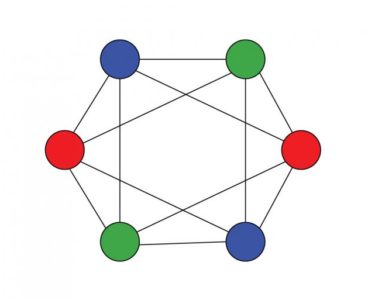Heart valve models created with advanced 3-D printers could soon assist cardiologists in preparing to perform life-saving heart valve replacements. Researchers at Georgia Institute of Technology and the Piedmont Heart Institute are using standard medical imaging and new 3-D printing technologies to create patient-specific heart valve models that mimic the physiological qualities of the real…
Drug Design Strategy Boosts the Odds Against Resistance Development
Researchers Create 3D Printed Tensegrity Objects Capable of Dramatic Shape Change
A team of researchers from the Georgia Institute of Technology has developed a way to use 3-D printers to create objects capable of expanding dramatically that could someday be used in applications ranging from space missions to biomedical devices. The new objects use tensegrity, a structural system of floating rods in compression and cables in…
New Computing System Takes Cues from Human Brain
Some problems are so challenging to solve that even the most advanced computers need weeks, not seconds, to process them. Now a team of researchers at Georgia Institute of Technology and University of Notre Dame has created a new computing system that aims to tackle one of computing’s hardest problems in a fraction of the…
Understanding What’s Happening Inside Liquid Droplets
For most people, the drip, drip, drip of a leaking faucet would be an annoyance. But for Georgia Institute of Technology Ph.D. candidate Alexandros Fragkopoulos, what happens inside droplets is the stuff of serious science. In the laboratory of Alberto Fernandez-Nieves in Georgia Tech’s School of Physics, Fragkopoulos is studying how toroidal droplets – which…
New Techniques Allow Greater Control of Smartwatches
Smartwatches aren’t the easiest things to control, with their small screens and owner’t bulky fingers. Georgia Institute of Technology researchers have invented new ways to interact that provide a little more control. Among their enhancements using LG and Sony watches: Scrolling through apps running your fingers along the watch band Launching eight smartwatch apps by…
New Low-Cost Technique Converts Bulk Alloys to Oxide Nanowires
A simple technique for producing oxide nanowires directly from bulk materials could dramatically lower the cost of producing the one-dimensional (1D) nanostructures. That could open the door for a broad range of uses in lightweight structural composites, advanced sensors, electronic devices – and thermally-stable and strong battery membranes able to withstand temperatures of more than…
Secret Phenotypes—Disease Devils in Invisible Details
When a microscopic lab worm grows an eye-popping oddity, scientists locate the mutated gene that caused it. It’s truly interesting. Yet, more important findings, medically relevant ones, may be hiding in traits invisible to the eye, even with the best microscope. Researchers at the Georgia Institute of Technology are exposing these secrets — micron-sized bumps…








